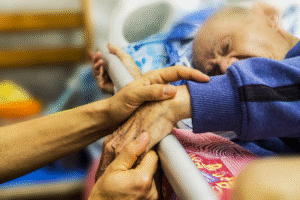Hypoglycemia is a common problem for diabetic patients, however people without diabetes can suffer from it as well. Regardless of your risk, it is important to learn about safely preventing, detecting, and treating its symptoms.
According to the American Diabetes Association (ADA), hypoglycemia is a condition distinguished by abnormally low blood glucose (sugar) levels. Blood glucose levels should stay above 70 mg/dl, however symptoms of hypoglycemia differ dramatically from person to person.
A combination of factors can cause sudden drops in blood glucose levels. These include diet, medication, and exercise. Talk with your doctor and become familiar with how your body reacts to an episode of low blood glucose.
If Left Untreated
If left untreated, severe hypoglycemia can have fatal consequences. Hypoglycemic patients are prone to accidents and injuries as a result of the swift onset of dangerous symptoms, including:
- Unconsciousness
- Weakness or fatigue
- Anger, sadness
- Lack of coordination
- Nightmares / crying out during sleep
- Seizures
- Nervous or Anxious Feeling
- Sweating, Chills, Clamminess
- Irritability / Impatience
- Confusion, including delirium
- Rapid heartbeat
- Feeling lightheaded / dizzy
- Hunger or Nausea
- Blurred / Impaired Vision
- Tingling / numbness
- Headaches
How To Treat
While hypoglycemia can sometimes turn into a medical emergency, it is rather easy to treat from home if done immediately. The ADA suggests consuming 15-20 grams of glucose or simple carbohydrates to help boost blood sugar levels. Be sure to recheck your glucose levels after eating. If the symptoms continue, repeat the process.
Without immediate treatment, hypoglycemia can cause seizures and comas. If a patient becomes unresponsive, the hormone glucagon must be used to return glucose levels to normal. Glucagon signals the liver to release stored glycogen and change it back to glucose. Because of this, blood sugar levels return to the normal range.
In some cases, a person may have few or none of the above symptoms, even though their blood glucose level may be lower than normal. This is called Hypoglycemia Unawareness (HU). HU can affect patients who often experience low blood sugar episodes or those who have had diabetes for a long time.
Wearing a medical ID can help increase the response time for a person having a hypoglycemic episode. In the event of an emergency, a medical ID communicates valuable information to first responders, therefore helping to make sense of an emergency situation.
Most of all, learn to understand the signs and symptoms of hypoglycemic episodes. Inform those close to you of the necessary precautions needed to handle such emergencies.
Article Sources:
- American Diabetes Association – Hypoglycemia (Low Blood Glucose)
- Mayo Clinic – Benefits of Medical ID Bracelets
- WebMD – The NIDDK on Hypoglycemia




